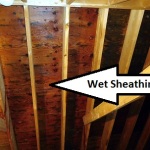
You can remediate, but you can’t hide
A new trend I’m seeing in attic mold removal is what I call the “hide-and-hope method.” As in hide the problem and hope the buyer’s home inspector doesn’t find it. I have been installing attic ventilation systems and removing mold from attics for more than 20 years and I am also a licensed home inspector. I can attest that whatever method of mold removal is used, there will always be a telltale sign that remediation was performed.
If a seller does not list the fact that mold remediation was performed on the property and the home inspector finds it, how will that make anyone in the transaction feel? As a real estate agent, you now have to go back to the buyer and tell them that the seller tried to pull a fast one. As the homeowner selling the property, you will always live with the knowledge that you passed along a potential problem to someone else without making him or her aware of it. The buyer now wonders that if the mold issue was not disclosed and an attempt to cover it up was made, what else about the property was not disclosed or covered up. The whole deal is then tainted and trust is broken. The hide-and-hope method is a huge chance to take, creates a red flag for the entire transaction, and I do not recommend it. The home inspection will actually go much better if any known problems and what may or not have been done to fix those problems are disclosed. Honesty is the best policy for all involved.
When Quigley Attic Mold performs attic mold remediation, we list what the original cause of the problem was (for example, bathroom fans venting into the attic, lack of proper ventilation, etc). We then fix the problems that led to the mold growth, and remove the mold. To insure that the mold has been completely removed, we finish each job with an antimicrobial sealant. The sealant is white and contains properties that inhibit new mold growth and makes it extremely easy to see that all mold and any residual stains have been removed. We then provide a transferrable warranty to the homeowner to pass along to the buyer. When the home inspector shows up, he or she can now put in the report that there was a problem caused by such-and-such that had resulted in mold growth. He or she can now note that the problem was addressed, the mold completely removed and the transferable warranty is in place. Instead of employing the hide-and-hope method, remember that the solve-and-share system works better for all involved in any real estate transaction.
